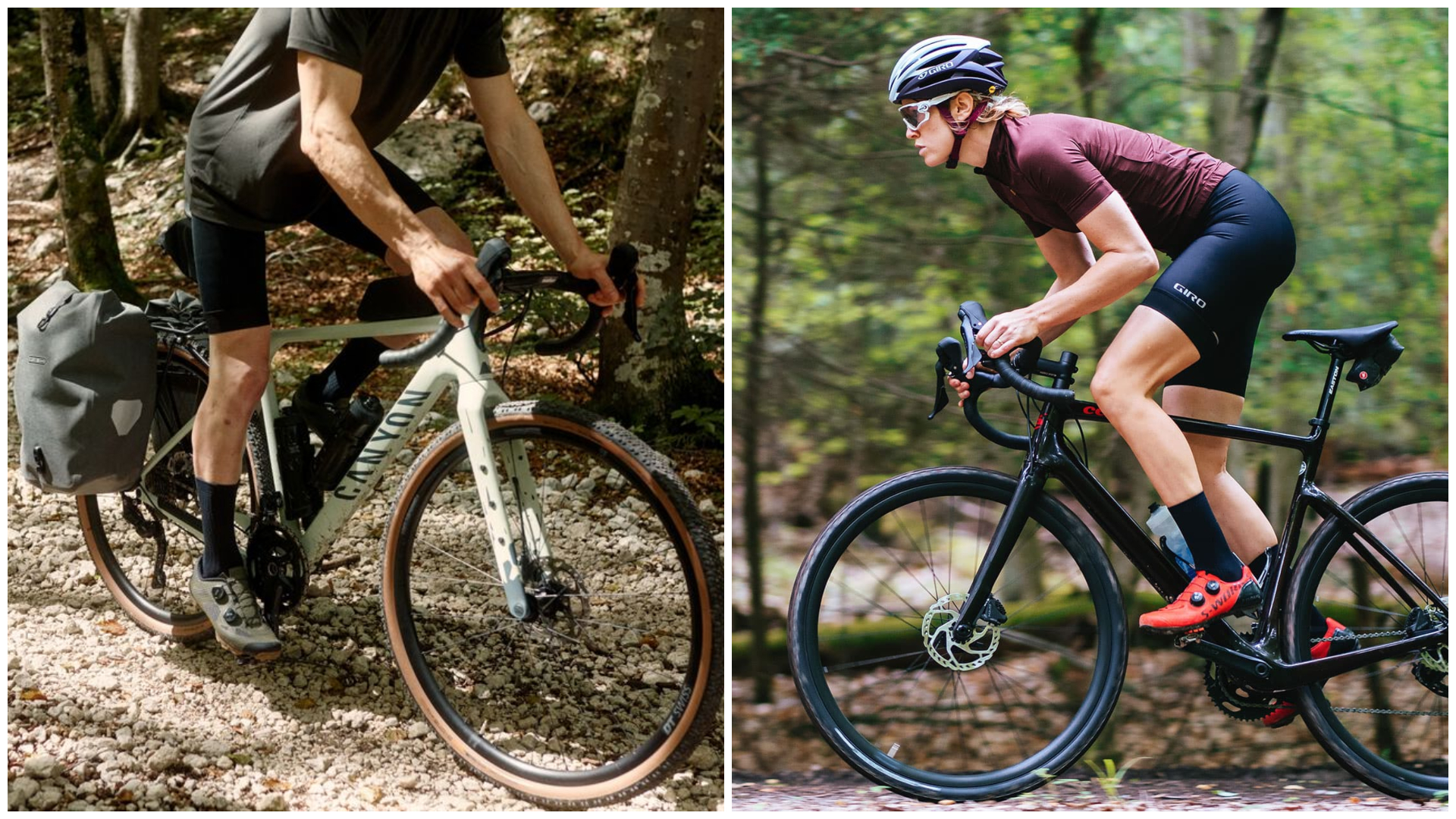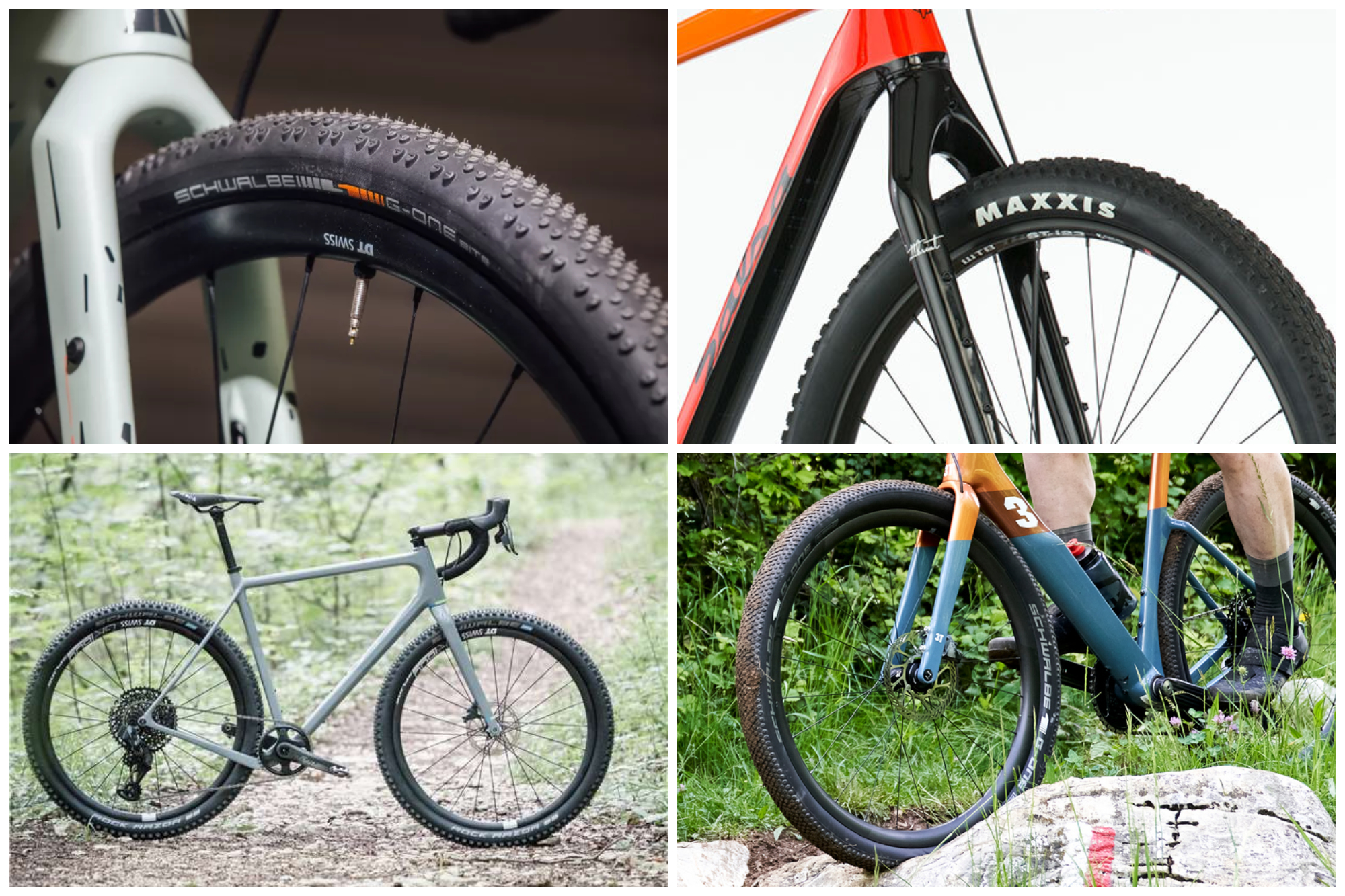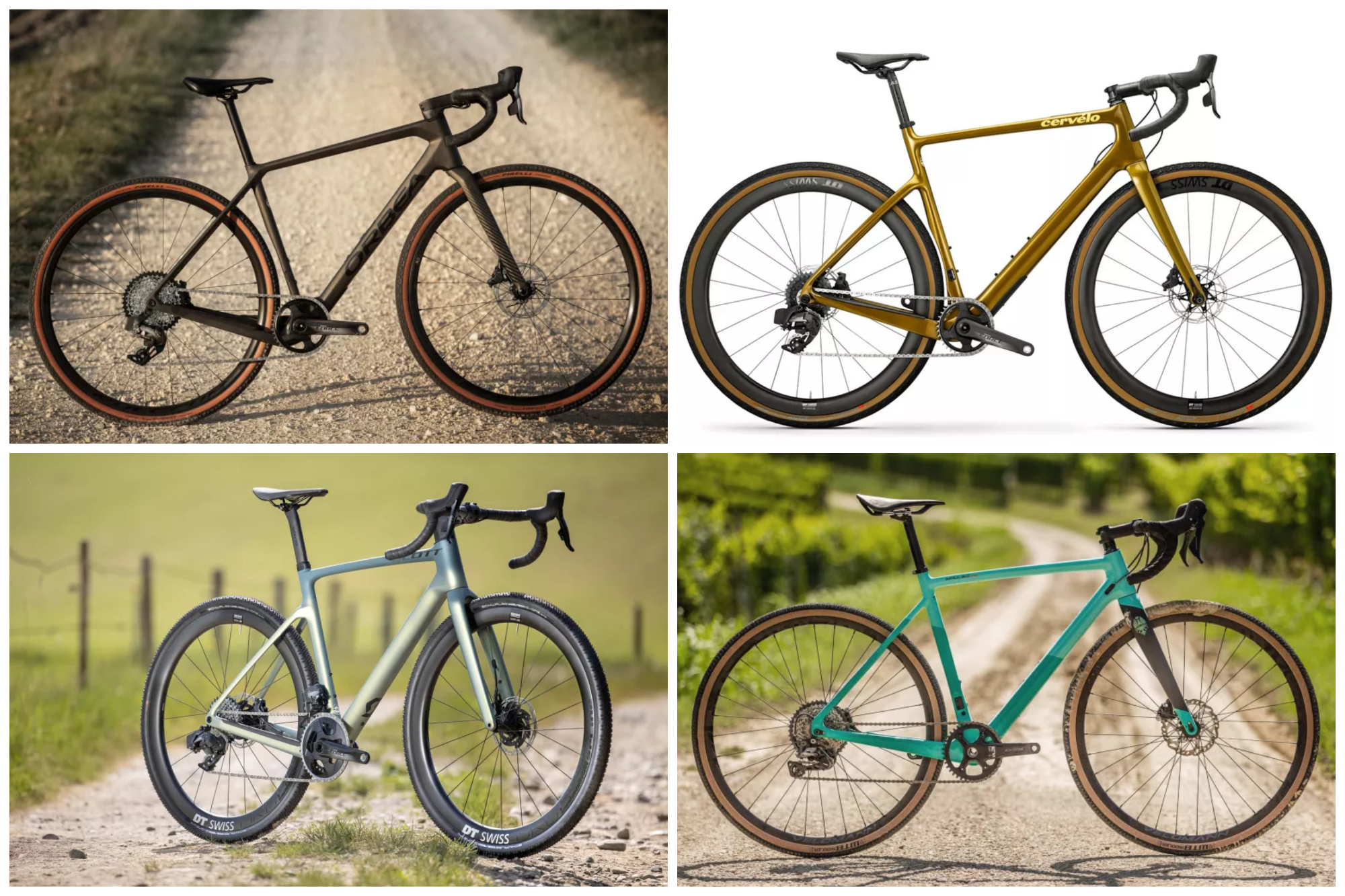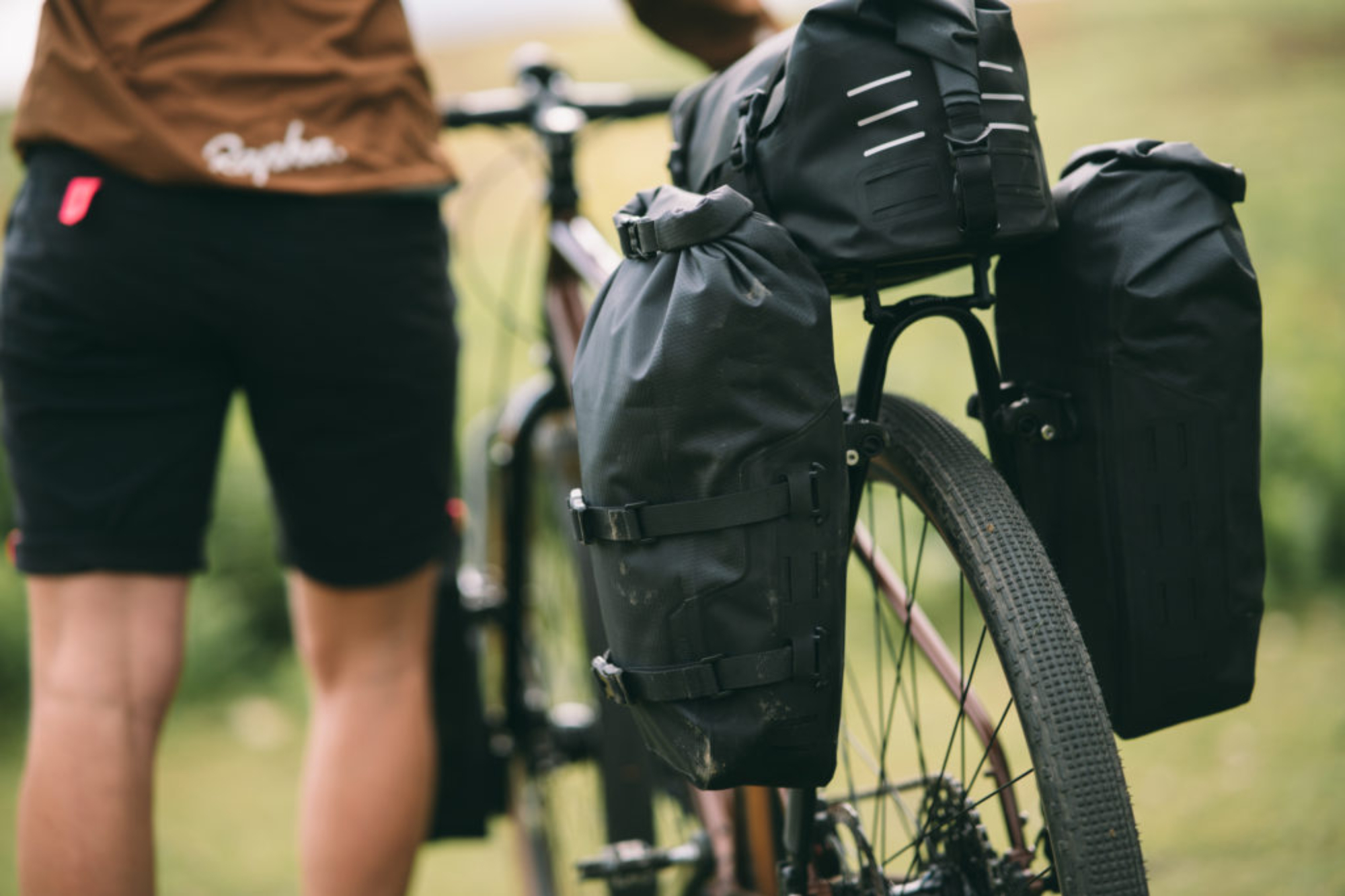Top 7 gravel tech trends for 2022
Diverging framesets and groupset innovation – here's what we're expecting in 2022


There is no question that 2021 has been a big year for gravel. We’ve seen the launch of SRAM’s XPLR component family, the UCI’s announcement of an inaugural Gravel World Champs and new bikes from the likes of Orbea, Canyon, Scott, Bianchi, Wilier, BMC and many more besides.
So we’ve certainly got a lot of data points to be working from in our tech trend predictions for 2022 – let’s get stuck in.
1. Progressive gravel geometry

Top left going clockwise: Fustle Causeway, Evil Chamois Hagar, Trek Checkpoint, BMC URS
We’ve been seeing elements of what’s known in the mountain biking world as ‘progressive geometry’ trickling into gravel bikes for a little while now.
Given just how transformative these geometry changes have been for flat bar bikes – and how many iterative updates have been necessary to get them to the point they’re at today – we can be pretty confident that this trend won’t be going away from gravel bikes any time soon.
In a nutshell, progressive geometry involves lowering the bottom bracket, slackening the head angle, lengthening the toptube – and then compensating for the increase in reach by swapping in a shorter stem.
These tweaks generally have the effect of making the bike feel more controlled and less twitchy, which is a great help for those more technical descents on steeper terrain.
The latest race content, interviews, features, reviews and expert buying guides, direct to your inbox!
You can find pretty extreme examples of this in gravel bikes such as the Fustle Causeway and the Evil Chamois Hagar. But it’s certainly coming ever more into the mainstream with BMC’s URS range and the new Trek Checkpoints both adopting the cues.

BMC URS ONE
The changes do make a palpable difference. When executed well, it can make for a truly fabulous bike. We were particularly impressed by the BMC URS – the raked out fork, stubby stem and tight rear end made for a snappy, playful – but easily controllable – ride.
What was particularly good about the URS is that the geometry tweaks didn’t dampen its efficiency on long rides. Although so much fun for an evening or weekend blast, it still didn’t feel sluggish when taken out on an all-day epic.
Now, there is a limit – at least for us mere mortals – to just how much ‘gnar’ a gravel bike can take. You might question the need for ever slacker head angles and ever stubbier stems if your frame of reference is 40mm tyres and a rigid fork. Which leads us neatly on to the next trend in our list...
2. Ever larger tyres

Starting top left and going clockwise: Canyon Grizl, Salsa Cutthroat, 3T Exploro Max, Open Wide
Does it count as a tech trend specifically for 2022 if gravel bikes have been swallowing wider rubber every year since their first inception?
We’ll hold on an answer to that question as the point still remains that new ground is going to be broken in 2022 and bigger brands will continue following where the smaller ones have led.
It wasn’t long ago that 650b by 47mm was the gold standard for chunky rubber. Now, tyres much wider than that are being mounted to larger, 700c rims to combine greater traction and cushion with better roll-over too.
The Canyon Grizl, which launched earlier this year, is perhaps the highest profile bike to go up to 700c by 50mm. But there are plenty of gravel bikes from smaller outfits pushing things even further, such as the Salsa Cutthroat, The Open Wide and 3T’s Exploro Max
For 2022, at the very least we expect more brands to be releasing frames that match the Grizl for clearance – and potentially we might even see one of some of the more mainstream brands coming out with their very own drop-bar 29er.
3. Gravel suspension

Continuing on in the vein of burly gravel bikes – don’t worry, we’ll come onto gravel race bikes soon – we expect to see many more models coming spec'd with front suspension for 2022. With both RockShox and Fox offering gravel specific forks, there definitely is the supply – implying that at the very least those brands believe that there is the demand.
It’s a common refrain that gravel bikes are essentially morphing themselves into old-school mountain bikes – but that might not be such a bad thing at all.
As Cross-Country World Cup courses are becoming ever rougher and more technical, likewise the bikes are being made ever more capable to suit – but this does come somewhat at the expense of efficiency.

Scott Spark RC World Cup Evo AXS
This progression into full suspension rigs sporting 120mm of travel is leaving behind a bit of a vacuum that the cross-country category did previously use to fill – namely, long distance riding on moderately rough trails. Or at least, rougher than you’d really wish to tackle on a rigid bike with 40mm tyres.
Taking that all together, we expect that many more brands will be releasing gravel bikes equipped with front suspension – and dropper seatposts – in 2022.
4. Gravel race bikes

Starting top left going clockwise: Orbea Terra, Cervelo Aspero, Bianchi Impulso Pro, Scott Addict Gravel
Now we come to the other side of that growing gulf in the gravel genre. Yes, on the one hand, you have those bikes being made ever more burly and capable, but on the other you have those being refined for the UCI’s nascent gravel racing category which is going to be underway next year.
We’ve been seeing the Orbea Terra, Cervelo Aspero and the Scott Addict Gravel, all eschewing the widest rubber in favour of builds that are a little more nibble, lightweight and efficient.
They’re an answer to the reasonable complaints that going too burly can make gravel bikes a little too slow and sanitizes the ride. These bikes are built for speed and to be more flickable and manoeuvrable – rather than just steamrollering over the terrain.
Gravel race-bike design makes for some pretty interesting specimens. The geometry still benefits from a slight ‘progressive’ bent, making them more stable and confidence inspiring than a traditional cyclocross bike.
Although those machines are excellent for continuous 180 degree turns on flat muddy fields and hopping over arbitrary wooden boards, that reactive, slightly twitchy, handling of a cyclocross bike isn’t exactly ideal for the longer distance endurance riding that’s more typical of gravel.
Paired with the right tyres and they’re barely any slower on the road than a traditional winter endurance bike – but with the added bonus of being able to handle things off road. A one-bike solution might not be quite that for everyone – a jack of all trades is master of none, after all – but these gravel race bikes at least have the potential to help keep the number down, should you wish to and we’re certain we’ll be seeing more in 2022.
5. Hidden cables

Scott Addict Gravel
It’s a trend we first saw on aero road bikes, with the ostensible reason being to help lower the CdA for improved aerodynamic efficiency. For gravel bikes, full internal cable routing instead has the benefit of making it a little easier to attach handlebar and other cockpit bikepacking bags.
Cable management has always been a bit of a headache for gravel bikes - trying to thread the proverbial needle so that the cables aren’t damaging either the paintwork or the bag. Also ensuring that the cables themselves aren’t going to end up getting damaged, with the consequences being malfunctioning brakes and sloppy shifting.
For both aero bikes and gravel, you can definitely see the reasoning. But at the same time, you can’t help but feel that perhaps, maybe, it’s simply the clean aesthetic that’s the driving force behind this.
Either way, it certainly stirs up emotions - some see it as yet another cynical way for bike brands to mark out the latest model in order to have something different to sell you – with increased maintenance faff only adding insult to injury.
That bike brands want to sell you more bikes is getting close to a tautology - it’s essentially true by definition. But when it comes to the cable routing, we feel the damage was done from the moment they went inside the frame - at that point aesthetics were put first and routine maintenance became no longer straightforward.
WIth the prevalence of electronic and hydraulic groupsets these days, we’d argue that a modern fully internally routed bike is less of a pain than a partially internally routed bike with mechanical shifting and braking – but let us know your thoughts down in the comments.
One thing we can be sure of, is that we are going to be seeing more of this in 2022.
6. Shimano GRX 12 speed?

You might think we’re jumping the gun a little bit here – and to be honest, so do we. A little bit. But not entirely – let us explain.
We’re used to Shimano updating its groupsets in four yearly cycles, so with GRX having only been released in 2019, by the books we shouldn’t really be expecting anything for a whole 'nother year.
But with that said, taking a look across the aisle to Shimano’s mountain biking groupsets, the Japanese giant has shown it can churn out launches when it feels it’s slipped a little too far behind.
With SRAM having brought 12-speed shifting down to its third tier while Shimano’s range topping XTR was still only on 11, the rapidity with which Shimano then introduced and trickled down the 12-speed tech was startling to see.
We’d argue that Shimano is now in essentially the same place with SRAM when it comes to gravel groupsets.

SRAM XPLR
Since the launch of SRAM’s XPLR range of components, it can provide 1x gearing options with more range at both the top end and the low end, while also smoothing out the cadence changes with the inclusion of one single tooth jump – of which 1x GRX has none.
SRAM’s 2x offering has long blown Shimano’s out of the water, again offering the one-two of a broader range and more single tooth jumps.
The only response Shimano has really had has been that, in offering mechanically actuated shifting, it can hit the lower price points than SRAM can with its electronic 12 speed groupsets. Although that said, SRAM’s 1x11 mechanical groupsets can be cheaper and can provide more range than the Shimano equivalent.
If Shimano could bring out a 12-speed electronic GRX groupset at about the Ultegra level, it will at least have something to match SRAM’s higher tier offerings. But since SRAM trickled its 12-speed electronic tech down to its third tier, really a 12-speed electronic 105 level groupset is necessary to keep pace.
So far, that’s completely without precedent, but even so, it could be something we see next year.
7. Gravel panniers

Tailfin luggage system
Bikepacking bags are great for all-day epics and minimalistic multi-day trips. Being significantly lighter and much less bulky, you can travel so much further and faster than with a traditional set of great big panniers – which have a tendency to catch the wind and exaggerate the climbs.
But the user experience of bikepacking bags can be quite different on a more relaxed gravel bikepacking tour – at least compared with ultra-distance racing that serves as an almost equal test of your ability to function under sleep deprivation as it is a test of your legs. For those more meandering rides, it would be nice to be able to pack in a little more and to be able to access your things a little more quickly.
Tailfin is one brand which has been developing a steady range to suit this growing portion of the market. Their aeropack – which is essentially a cross between a giant saddlebag and a centrally mounted pannier – has been around for a little while now.
But more recent additions, such as their 10 litre Mini Panniers serve to further increase carrying capacity whilst remaining shy of a full-on set of panniers. As more people turn to two wheels for their holidays, we expect more brands to meet the needs of increased carrying capacity.

After winning the 2019 National Single-Speed Cross-Country Mountain Biking Championships and claiming the plushie unicorn (true story), Stefan swapped the flat-bars for drop-bars and has never looked back.
Since then, he’s earnt his 2ⁿᵈ cat racing licence in his first season racing as a third, completed the South Downs Double in under 20 hours and Everested in under 12.
But his favourite rides are multiday bikepacking trips, with all the huge amount of cycling tech and long days spent exploring new roads and trails - as well as histories and cultures. Most recently, he’s spent two weeks riding from Budapest into the mountains of Slovakia.
Height: 177cm
Weight: 67–69kg